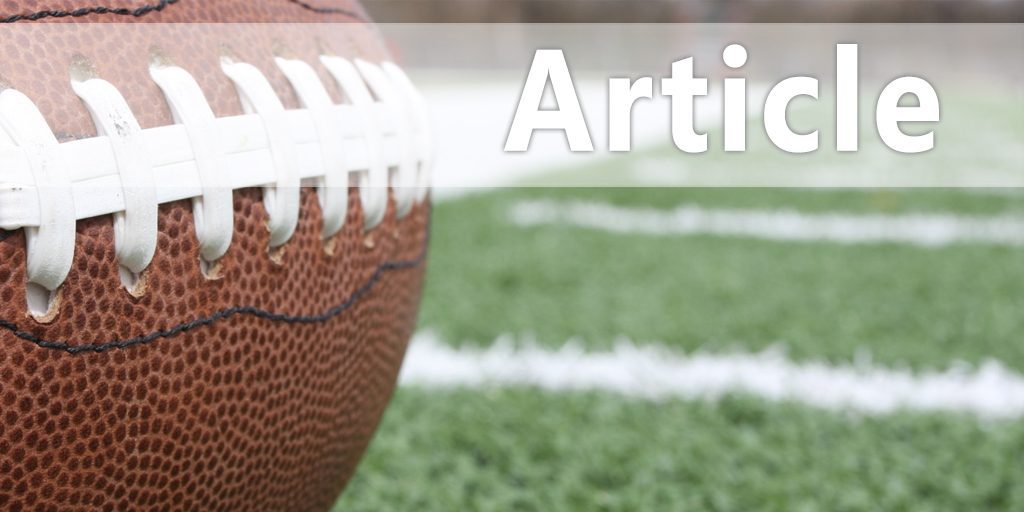| Drills to Improve Safe and Secure Tackling
By: Brad Thompson Provided by: Stack
Never before has there been so much concern about head injuries in football. Not coincidentally, the quality of tackling has also sharply declined in recent years. Defenders fail to wrap up, they lower their heads on contact, and they lunge. All of these mistakes can be easily fixed with a simple drill progression that promotes not only secure tackling, but safety as well. These drills, you will notice, promote using the facemask when tacking. Some argue that shoulder tackling decreases injuries, but this is not so. The shoulder is the weakest joint in the body, and tackling with the shoulder puts the collarbone, shoulder joint, neck, and head at risk of injury. Shoulder tackling is also much less secure than properly tackling with the facemask. Four-Point Explosion Proper tackling is built from the ground up, and so is this tackling drill progression. Kneel on both knees with your hands on the ground in front of you. Your partner should be facing you and squatting slightly. Your weight should be on your hands, and your feet should not touch the ground. Explode forward into your partner. Your facemask should fit in the middle of your partner's chest as you drive your arms up into his armpits and grab the back of his jersey. Because your feet are not touching the ground, you have no choice but to explosively drive your hips into the tackle. Three-Point Explosion Continuing the progression, now complete the tackle from one knee. Explode up from the ground into your partner, who is standing erect in this drill. Once again, focus on driving your facemask into your partner's chest and bringing your arms up through his armpits to grab cloth at the back of his jersey. Using your arms in this manner is more secure than wrapping your arms around a ball-carrier's midsection. It also has the added benefit of bringing explosive contact to the place where a runner is most likely to be carrying the football. As you explode into the tackle, drive the knee that was on the ground up high. You will never duplicate this movement in a game, but doing so in practice forces you to exaggerate the explosive movement of the tackle. Two-Point Explosion Now you can make the tackle from a standing position. Assume a good tackling position with your knees bent and your torso leaning slightly forward. Your facemask should be almost touching your partner's midsection, just below the shoulder pads. Step into the tackle, driving your facemask up into your partner's chest and bringing your arms up into his armpits. Depending on his height, you may actually lift your partner off the ground slightly if you execute the drill correctly. Focus on using your facemask as the point of contact, not the top of your helmet. Putting your face into the tackle helps you not only keep your head up to avoid neck injuries, but also lets you see your target, increasing the likelihood of a successful tackle. Creeping to Fit Once you are able to execute the tackle, you have to ensure that you can get into position to make the play. The Creep-to-Fit drill helps you learn how to bring yourself under control before the tackle. Doing so will cut down on missed tackles. With one foot staggered in front of the other, move forward in a creeping motion, shuffling your feet and making sure to keep the front foot in front at all times. You should reach your partner in the same position where you began the two-point explosion drill. Now execute the tackle. Coaches, you may want to place a crash pad on the ground behind the stationary ball carrier. If the drill is done correctly, people will be hitting the ground. Dummy Drills Practicing tackling at full speed is not always practical against a live opponent, but heavy tackling dummies can be used repeatedly. One-man tackling sleds force players to approach the dummy with momentum before exploding into the tackle. This is a great way to build explosive strength and power in your tackles. One-on-One Tackle Now that you have tackled a dummy at full speed, you're ready to take on a live opponent (although this drill should be done infrequently because of the risk of injury from repeated full-speed contact). It can be done within the scope of a team drill, moving straight ahead, or moving at an angle. You must incorporate all aspects of the teaching progression in order to ensure safe and effective tackles.
|






